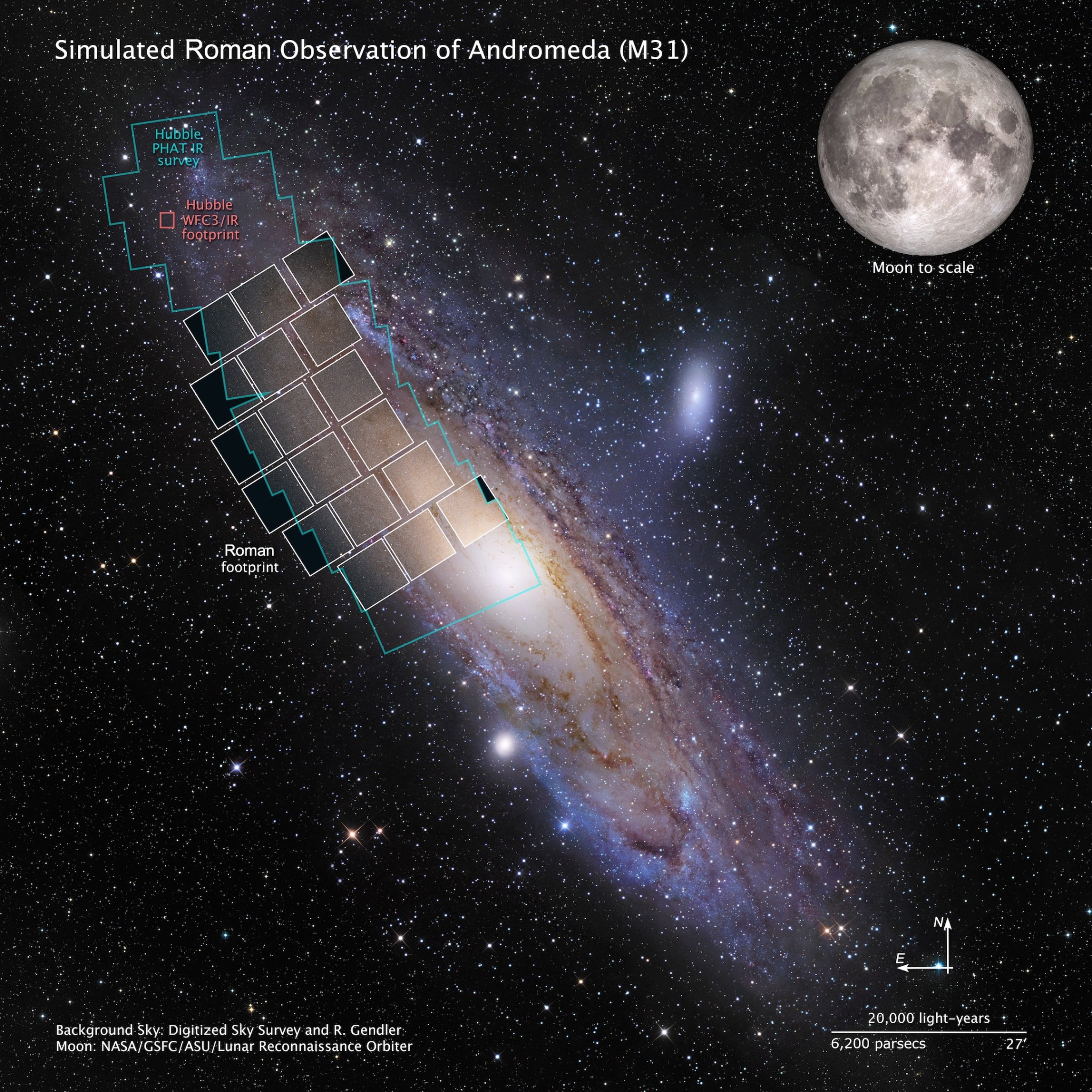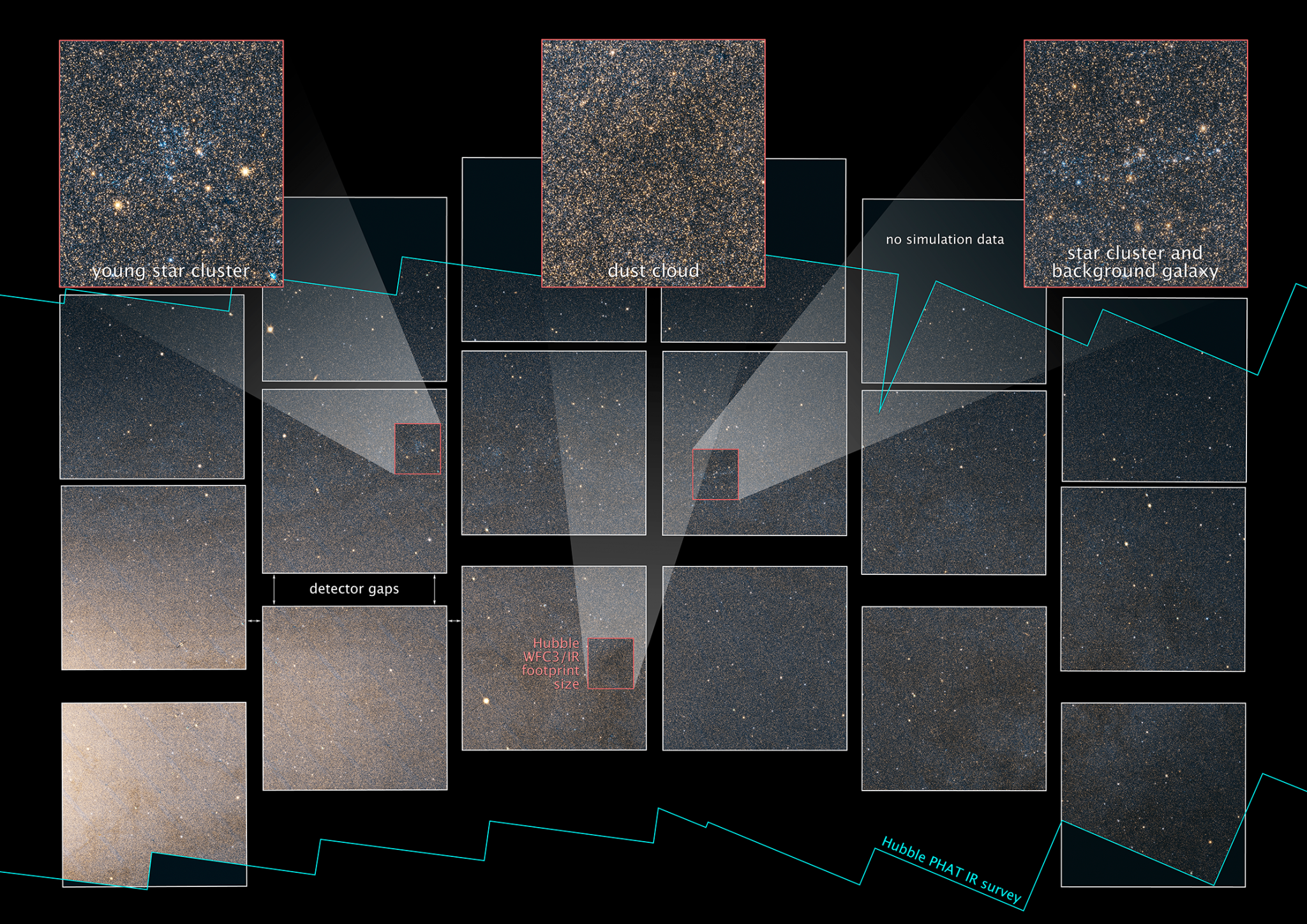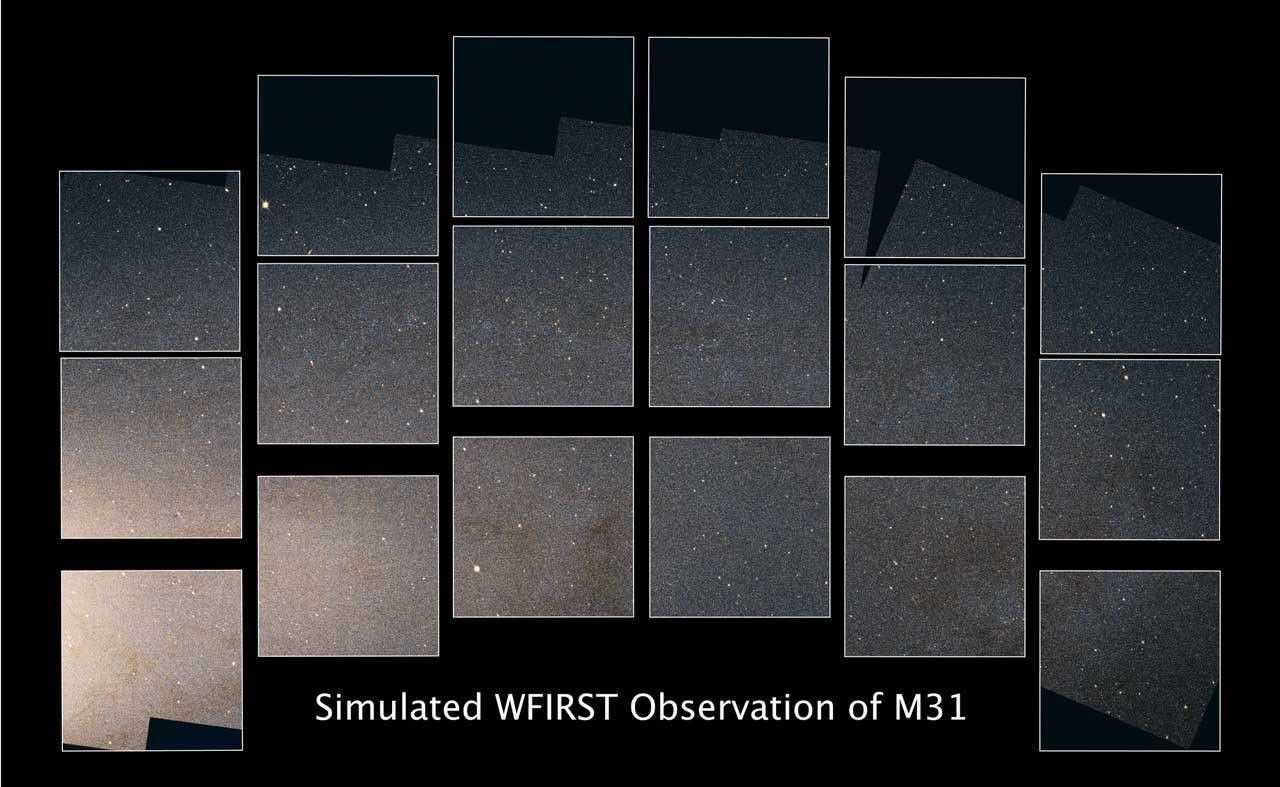Roman will support general astrophysics goals beyond dark energy and exoplanets in two ways. First, the core community surveys will enable archival investigations. Second, at least 25 percent of the five-year primary mission will be dedicated to peer-reviewed science covering any aspect of astrophysics.
While Roman’s core surveys are each geared toward specific science goals, the observations will contain a treasure trove of additional data. NASA will make all of Roman’s data publicly available for anyone to explore the secrets of our universe. There will be no proprietary period, ensuring multiple scientists and teams can use data at the same time, which is important since every Roman observation will address a wealth of science cases.
Roman will also reserve a substantial fraction of time for additional observations to pursue science that can't be done with the mission's core surveys. Astronomers from all over the world will have the opportunity to use Roman and propose cutting-edge research. This additional observing time will enable the astronomical community to utilize the full potential of Roman’s capabilities to conduct extraordinary science.
For example, astronomers could study the development of stellar populations by surveying the galactic plane and other nearby galaxies, perform additional time domain surveys tuned to find things like stellar novae and other kinds of outbursts, and conduct tandem observations with other facilities.
The community process to define the core surveys kicked off in early 2023. The first call for proposals for general astrophysics surveys is anticipated a year before launch.
The mission will have a General Investigator Program designed to support astronomers to reveal scientific discoveries using Roman data. This includes detailed analysis of individual objects and populations, simulations of the universe, observations with other facilities to complement Roman data, and developing new theories that could be tested with Roman data.































